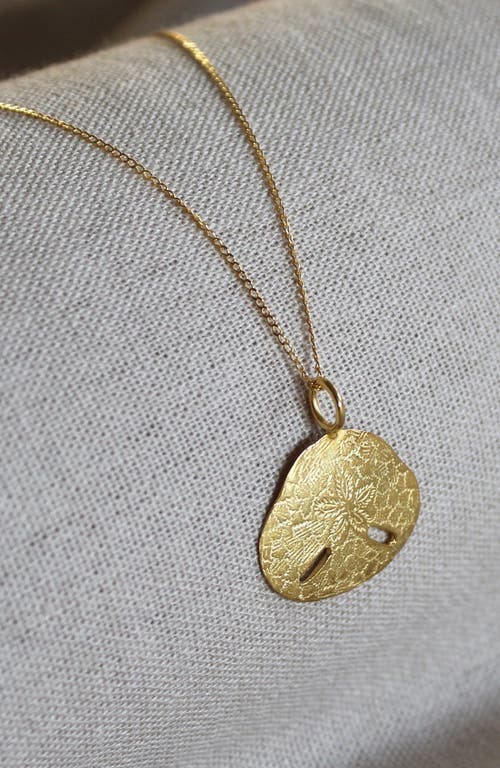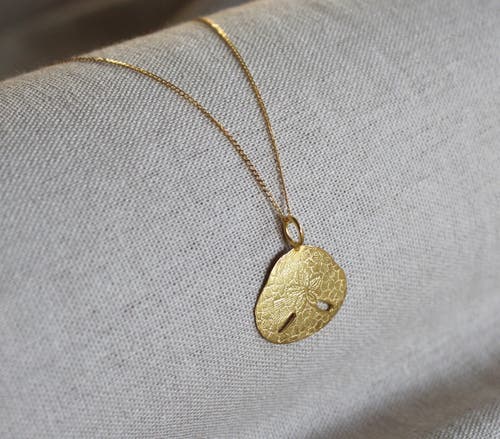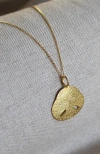Sand Dollars are extremely flattened, burrowing sea urchins belonging to the order Clypeasteroida and possess a rigid skeleton that consists of calcium carbonate. It gets its name from its appearance; when bleached by the sun and and washed ashore, its round flattened skeleton looks like an old silver coin more specifically the Spanish dollar which were traded across the Americas and Asia. The sand dollar pendants are cast in brass using the lost-wax-method from an original sand dollar found on Lamu Island, Kenya. Strung on sterling silver chain 92.5. Chain and pendant dipped in gold 22k. Accented with a Kyanite or Jade, semi-precious stones ethically sourced. Kyanite is sourced from a small-scale miner in Kenya where as Jade is sourced from a small-scale miner in Java, Indonesia. 1.18" x 1.18"




KAPOETA BY AMBICA Sand Dollar Necklace In Gold
Compare Across 800+ Stores

Sand Dollar Necklace In Gold
Sand Dollars are extremely flattened, burrowing sea urchins belonging to the order Clypeasteroida and possess a rigid skeleton that consists of calcium carbonate. It gets its name from its appearance; when bleached by the sun and and washed ashore, its round flattened skeleton looks like an old silver coin more specifically the Spanish dollar which were traded across the Americas and Asia. The sand dollar pendants are cast in brass using the lost-wax-method from an original sand dollar found on Lamu Island, Kenya. Strung on sterling silver chain 92.5. Chain and pendant dipped in gold 22k. Accented with a Kyanite or Jade, semi-precious stones ethically sourced. Kyanite is sourced from a small-scale miner in Kenya where as Jade is sourced from a small-scale miner in Java, Indonesia. 1.18" x 1.18"

